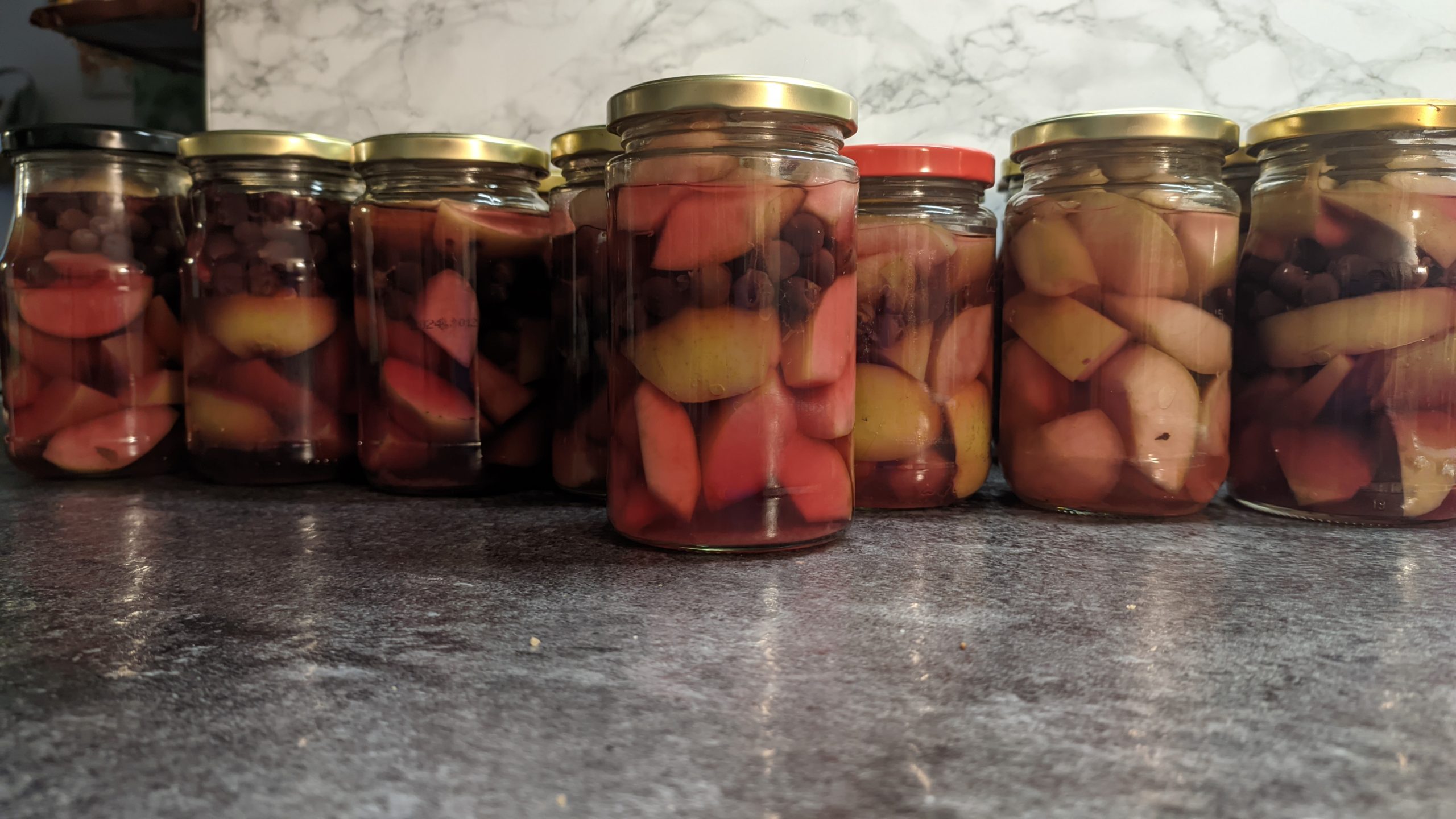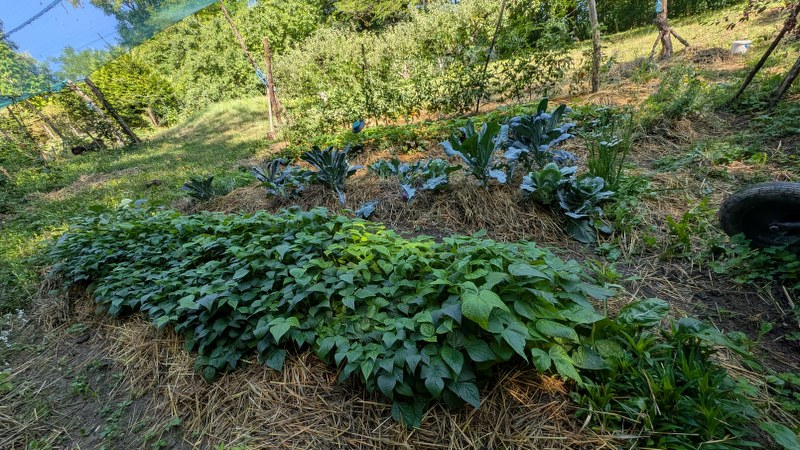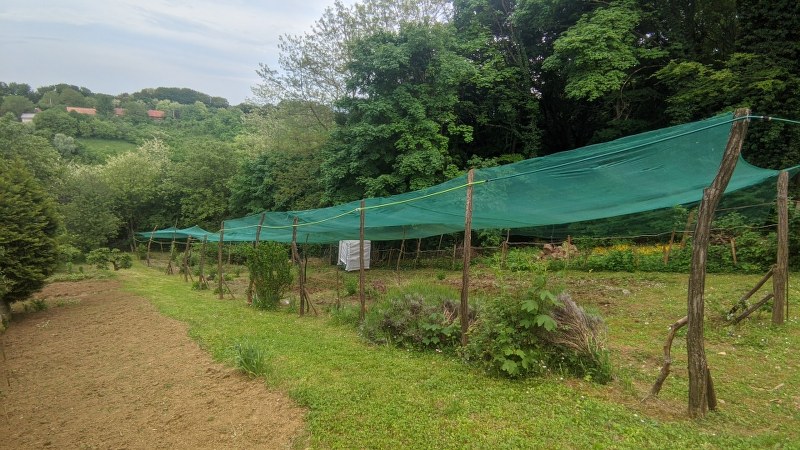In Croatia, apples are called the queen of the fruits. They are very loved and used in many ways, and most gardeners own at least one apple tree. So, what can we do with them? And how can we quickly use the damaged ones?
Early harvest
I own seven old apple trees. Most of them are over 20 years old, but they still produce a lot of apples, if the year is good, of course. For the past couple of years, we had no apples, due to the late April frost, which killed all the flowers. This year was much warmer than previous years, and there was no frost damage. All of my trees were packed with apples.

Due to the very warm summer, our apples started to ripe almost a month earlier. Usually, they would be edible around the end of August and taste perfectly around the middle of September. This is why I was completely surprised to see my apples full of hornets and wasps. After tasting them, I realized that they are almost completely ready for harvest. Last week I started taking off the damaged apples. But, I soon realized that there are too many insects and birds ravaging my orchard, so on Sunday, I decided to harvest every apple.

We got a nice amount of apples, although if I reacted a week earlier, I’d have at least one more box of apples. Almost 1/3 of the apples were completely rotten or damaged without the possibility of using them. I separated the good apples to separate fruit containers and placed all of the half-eaten and rotten apples in one container, which I took to the house and used immediately.

Most damaged apples can be still used, as long as they are processed or eaten immediately. Apples rot very fast, and a damaged apple can rot completely in just 24h. This is why I decided to dehydrate and make a compote out of them. I could have made jam or juice, but we still have jars full of jam and juice, and I really don’t need anymore. Dehydrated apples will be used for tea or rehydrated for baking, and compote will be a nice fruity snack during winter.
Dehydrating apples
Dehydrating apples is simple and rather fast, especially when done in the oven. I prewashed the apples and then cut them to small up to 1cm/0.4in thick pieces. I wasn’t able to cut all the apples into nice round pieces since I was using damaged apples. So I opted for small slices and round pieces when the apple was almost completely healthy.

Once the apples were cut, I placed them on a tray and left them in the fan oven on 50°C/122°F with the door open ajar. After an hour, I turned the apples to the other side and left them in the oven for another hour. The slices dried up fairly quickly. In about 6 hours, all the apple pieces were dry. I should mention that I was drying on 4 levels, and I kept swapping the trays on different levels.


After dehydrating the apples, I left them in a plastic container with paper towels. The reason why I do it this way is the moisture. If you close warm pieces in a glass jar, there’s a possibility the warmth will cause condensation in the jar, and moisture is the only big enemy for dehydrated fruits. Also, I couldn’t leave the pieces to cool down outside, as I was cooking at the same time, and the kitchen was steamy. This way the apples were closed in a lidded container, protected from the steam, but also with a towel to soak the possible moisture.

Once the apples have cooled down completely, I’ve moved them into a washed, dry, and room-heated jar. Glass jar with apples will be stored with all the other dehydrated goodies in the small basement.

Apple and grape compote
Since there were a lot of damaged and eaten apples, I also made some compote. To make it a bit more interesting I’ve made it with apples and grapes. Grapes are also ready for harvest, and I have to hurry with the harvest since the blackbirds are having a feast on the grape netting.
I cleaned the damaged parts of the apples, cut them into small chunks, and took the grape berries off the stems. I boiled some water with a couple of spoons of sugar(2 tablespoons on 1liter/0.2gal of water) and boiled the apples for a couple of minutes.

Since I had lots of apples, I boiled them in 3 rounds. While the second round was boiling, I started filling the small jars with the already-boiled apples and 2 tablespoons of grapes. I didn’t boil the grapes since I will pasteurize the jars anyway.

Once all the jars were full and all the apples were boiled, I poured the water and sugar mix over the apples and grapes. I didn’t have enough water mix, so I had to boil another liter of liquid. Filled jars were sealed with a lid and ready for pasteurization.

Pasteurization
Pasteurization is a process that I do with all my jarred goods. This is my favorite way to extend shelf life and, in my opinion, one of the easiest ways. In the jars made with vinegar, and small jars(370ml/12.51 fl oz) I use only pasteurization. There’s no need for sterilization. The jars will be perfect for years only with pasteurization.
The compote was pasteurized with the oven method. I placed a wet cloth on the bottom of the tray, placed the jars inside, filled the tray with water, and placed it in the oven. The oven was set on 100°C/212°F, and the jars were left for an hour to pasteurize.
Since I had lots of small jars, I had to do the pasteurization in 2 rounds. This is why when I finished the first round(after an hour). I took all of the jars out and wrapped them in blankets to slowly cool down. Then I loaded another round into the oven and repeated the procedure. Instead of getting the tray out after an hour, I turned the oven off and left the jars to cold down in a closed oven.

This is a great way to avoid the quick cooling of the jars and possible breaking. Also, the steam from the cooling will moist the oven which is then very easy to clean. I always clean my oven a day after pasteurization. This way I can do it very quickly and avoid scrubbing.
Compote usage
We usually eat this kind of compote and a fruit snack or breakfast, but it can be used in many different ways. The fruits stay in chunks and can be used in cakes, pastries, and cookies. They can later be made into a puree or even cooked into a jam. The compote juice can be used as a warm tea-like drink or a cold drink. I prefer it cold as a refreshing drink.

I got 22 jars of compote, but I could have more if the rest of the apples start spoiling. This is why I will check all of the apples every couple of days to see if they are still healthy and remove every apple that starts showing brown spots. It’s easier to clean and cook them when the affected area is smaller.





Leave a Reply